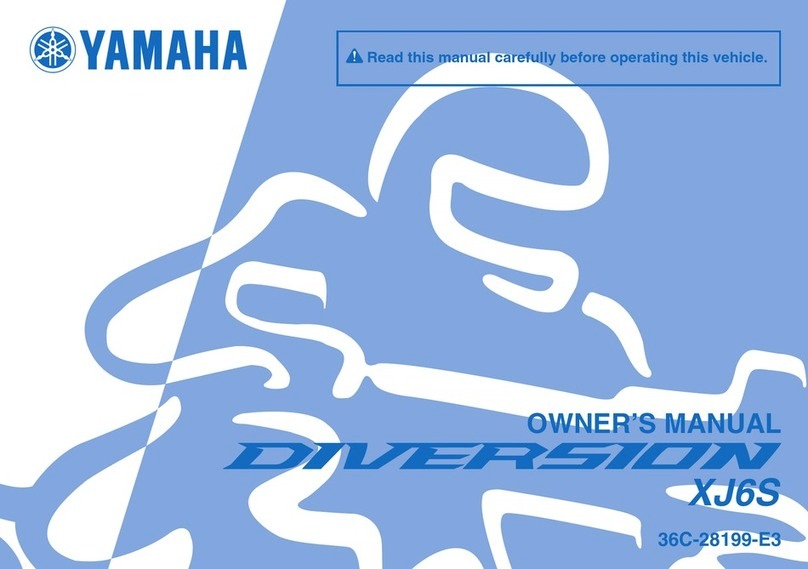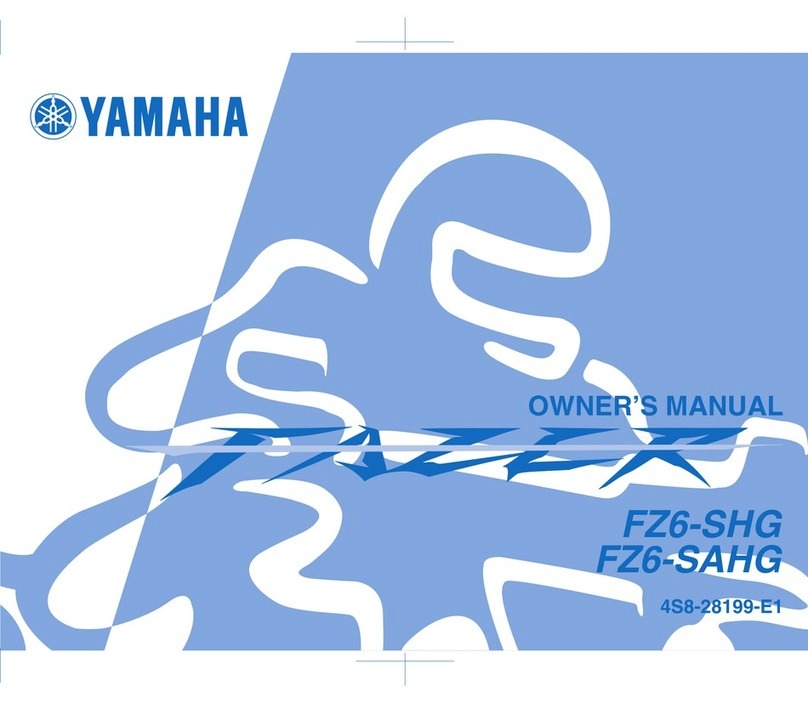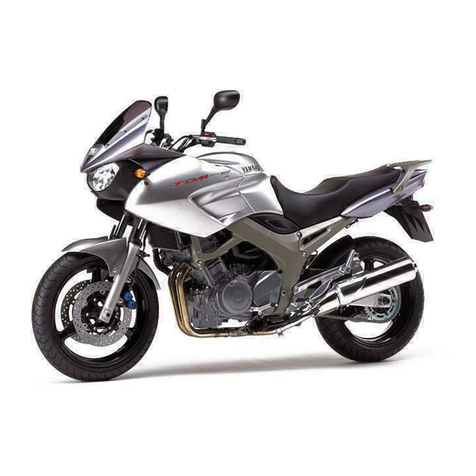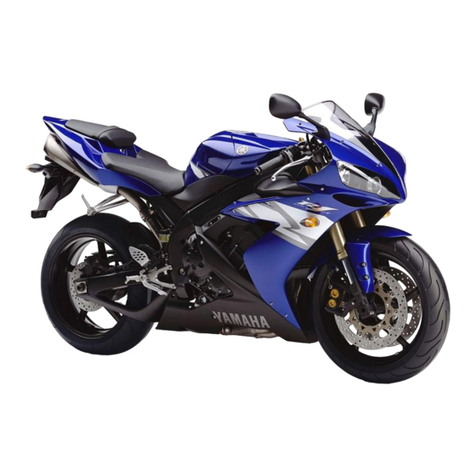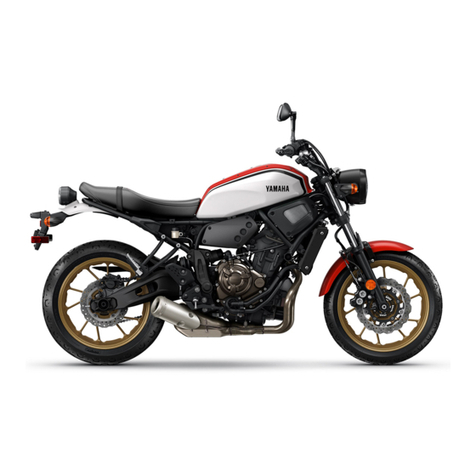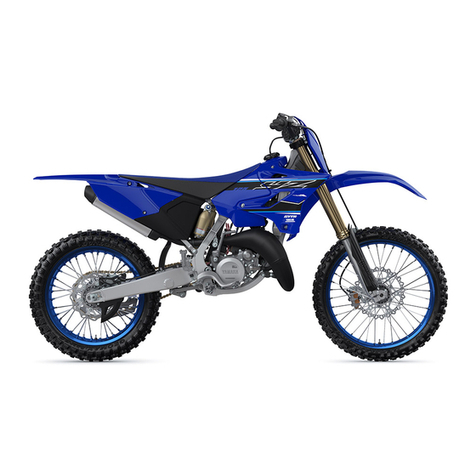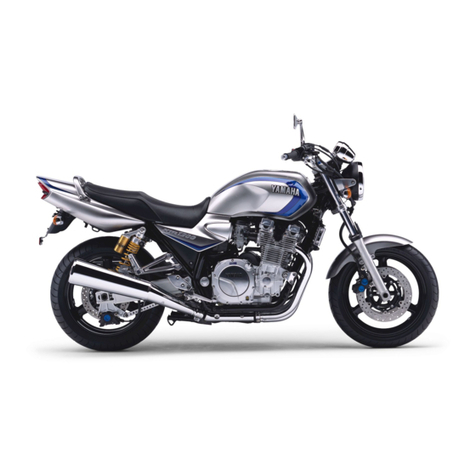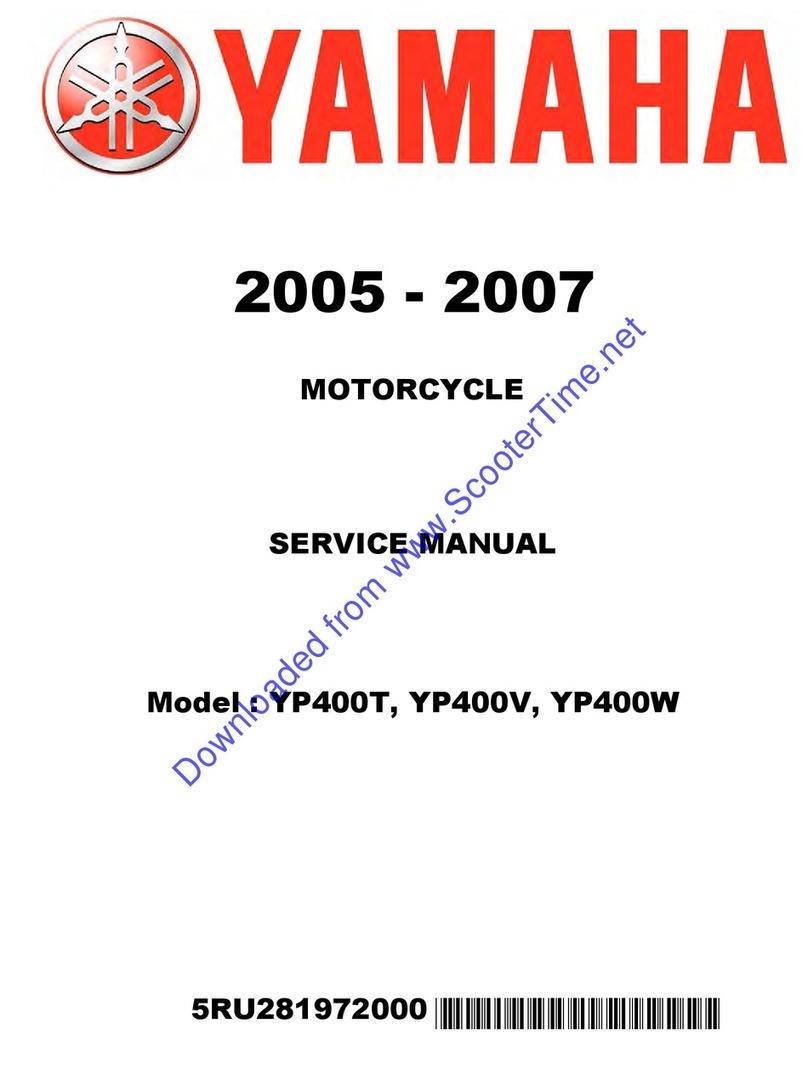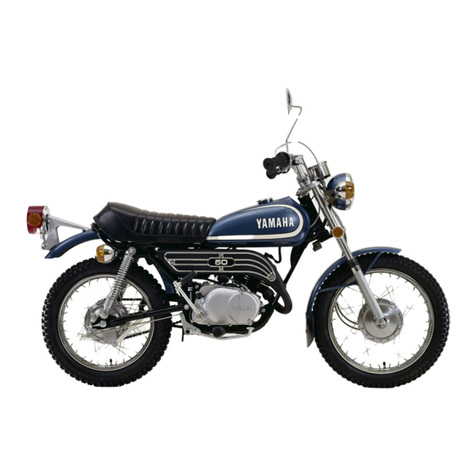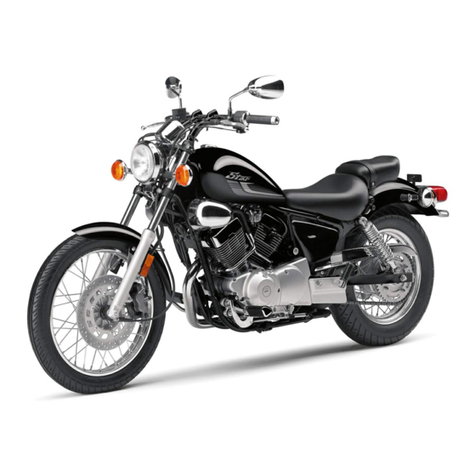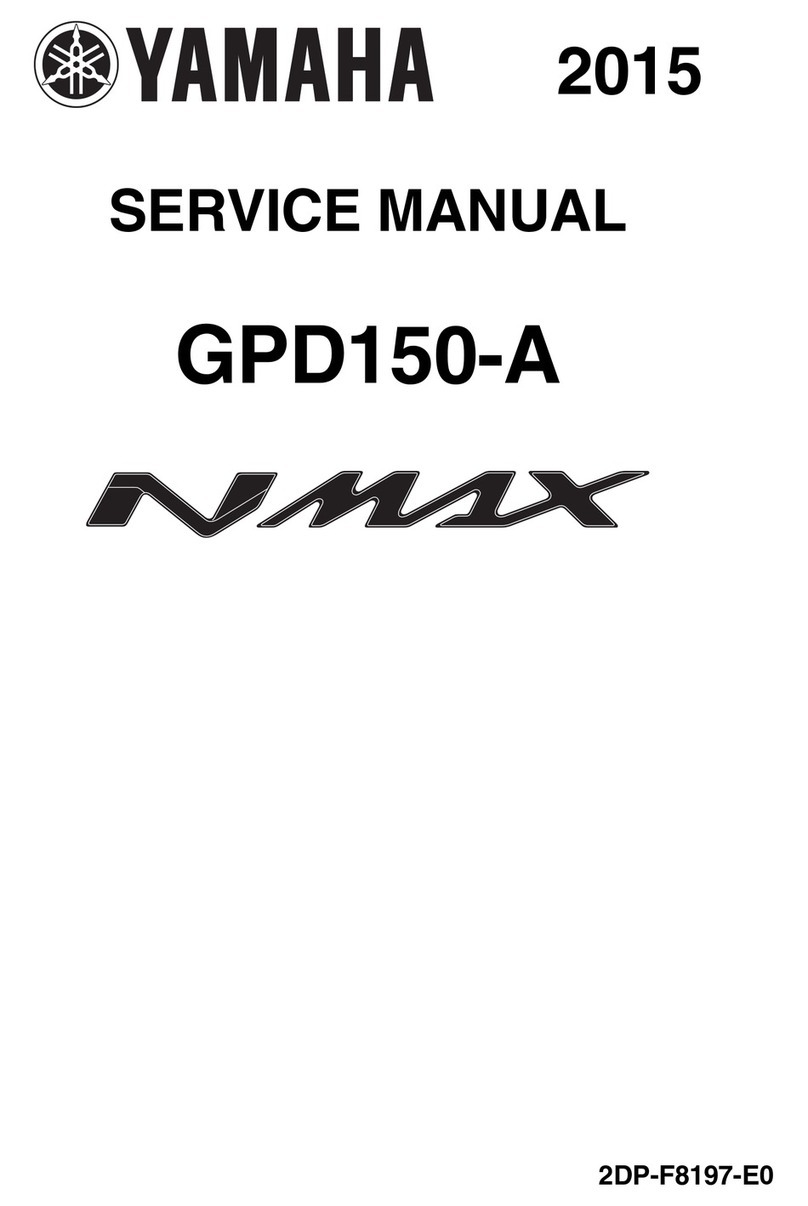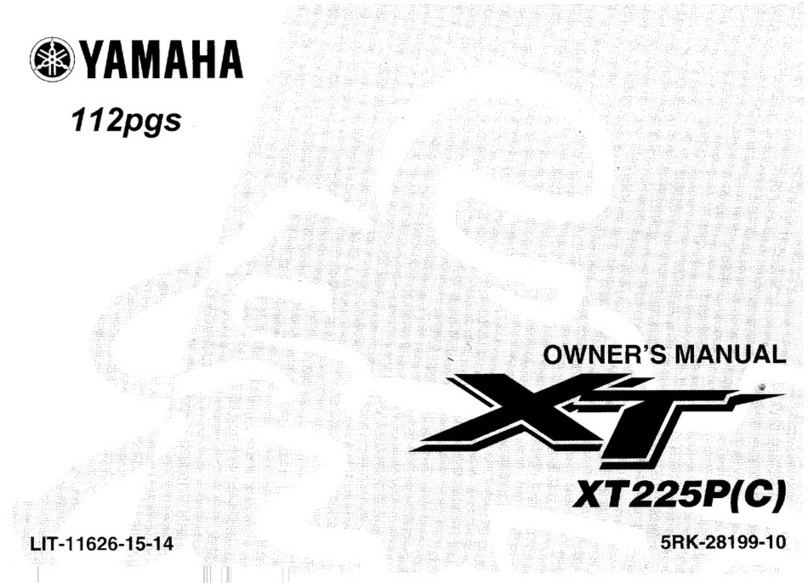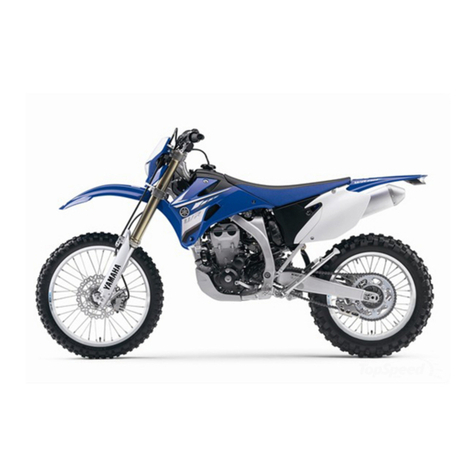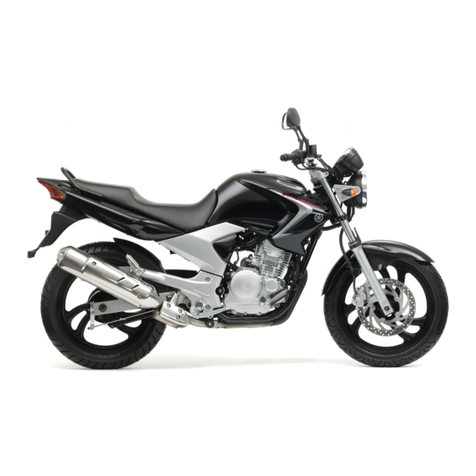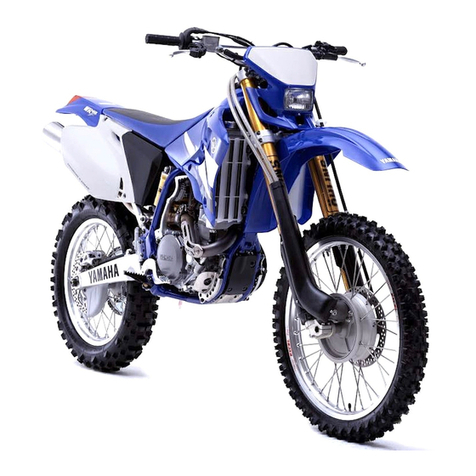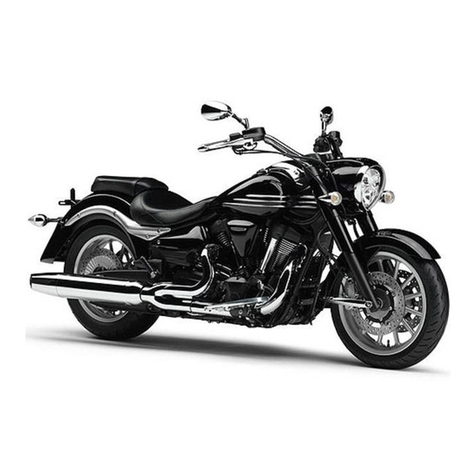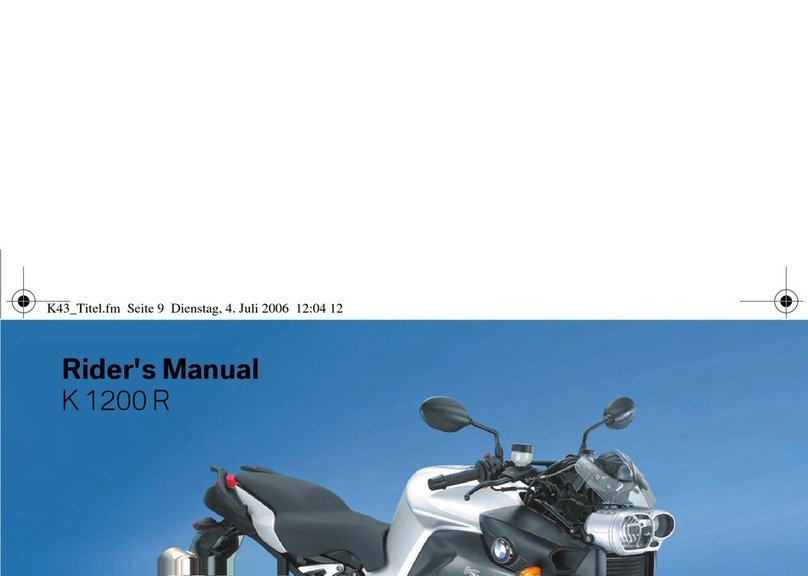
TABLE OF CONTENTS
SAFETY INFORMATION ..................1-1
Location of important labels ............1-5
DESCRIPTION ..................................2-1
Left view ..........................................2-1
Right view ........................................2-2
Controls and instruments.................2-3
INSTRUMENT AND CONTROL
FUNCTIONS .......................................3-1
Immobilizer system .........................3-1
Main switch/steering lock ................3-2
Indicator and warning lights ............3-3
Tachometer ....................................3-8
Multi-function display ......................3-8
Handlebar switches ......................3-12
Clutch lever ...................................3-13
Shift pedal .....................................3-14
Brake lever ...................................3-14
Brake pedal ..................................3-15
Fuel tank cap ................................3-15
Fuel ...............................................3-16
Catalytic converter ........................3-17
Seats ............................................3-17
Helmet holders .............................3-18
Storage compartment ...................3-19
Adjusting the front fork ..................3-19
Adjusting the shock absorber
assembly ...................................3-21
Luggage strap holders ..................3-22
Sidestand ......................................3-23
Ignition circuit cut-off system ........ 3-23
PRE-OPERATION CHECKS ............. 4-1
Pre-operation check list .................. 4-2
OPERATION AND IMPORTANT
RIDING POINTS................................. 5-1
Starting the engine ......................... 5-1
Shifting ........................................... 5-2
Tips for reducing fuel
consumption ............................... 5-3
Engine break-in .............................. 5-3
Parking ........................................... 5-4
PERIODIC MAINTENANCE AND
MINOR REPAIR ................................. 6-1
Owner’s tool kit ............................... 6-1
Periodic maintenance and
lubrication chart .......................... 6-2
Removing and installing cowlings
and panels .................................. 6-6
Checking the spark plugs ............... 6-8
Engine oil and oil filter cartridge ..... 6-9
Coolant ......................................... 6-12
Checking the air filter element ...... 6-16
Air intake duct .............................. 6-17
Adjusting the engine idling
speed ........................................ 6-18
Checking the throttle cable free
play ........................................... 6-18
Valve clearance ............................ 6-19
Tires ............................................. 6-19
Cast wheels ................................. 6-21
Adjusting the clutch lever free
play ........................................... 6-22
Adjusting the rear brake light
switch ....................................... 6-23
Checking the front and rear
brake pads ................................ 6-23
Checking the brake fluid level ...... 6-24
Changing the brake fluid .............. 6-25
Drive chain slack .......................... 6-25
Lubricating the drive chain ........... 6-26
Checking and lubricating the
cables ....................................... 6-27
Checking and lubricating the
throttle grip and cable ............... 6-27
Checking and lubricating the
brake and shift pedals .............. 6-28
Checking and lubricating the
brake and clutch levers ............ 6-28
Checking and lubricating the
sidestand .................................. 6-29
Lubricating the swingarm
pivots ........................................ 6-29
Checking the front fork ................. 6-30
Checking the steering .................. 6-30
Checking the wheel bearings ....... 6-31
Battery ......................................... 6-31
Replacing the fuses ..................... 6-32
Replacing a headlight bulb .......... 6-34
Tail/brake light ............................. 6-35
U5SL22E0.book Page 1 Monday, August 9, 2004 3:22 PM


